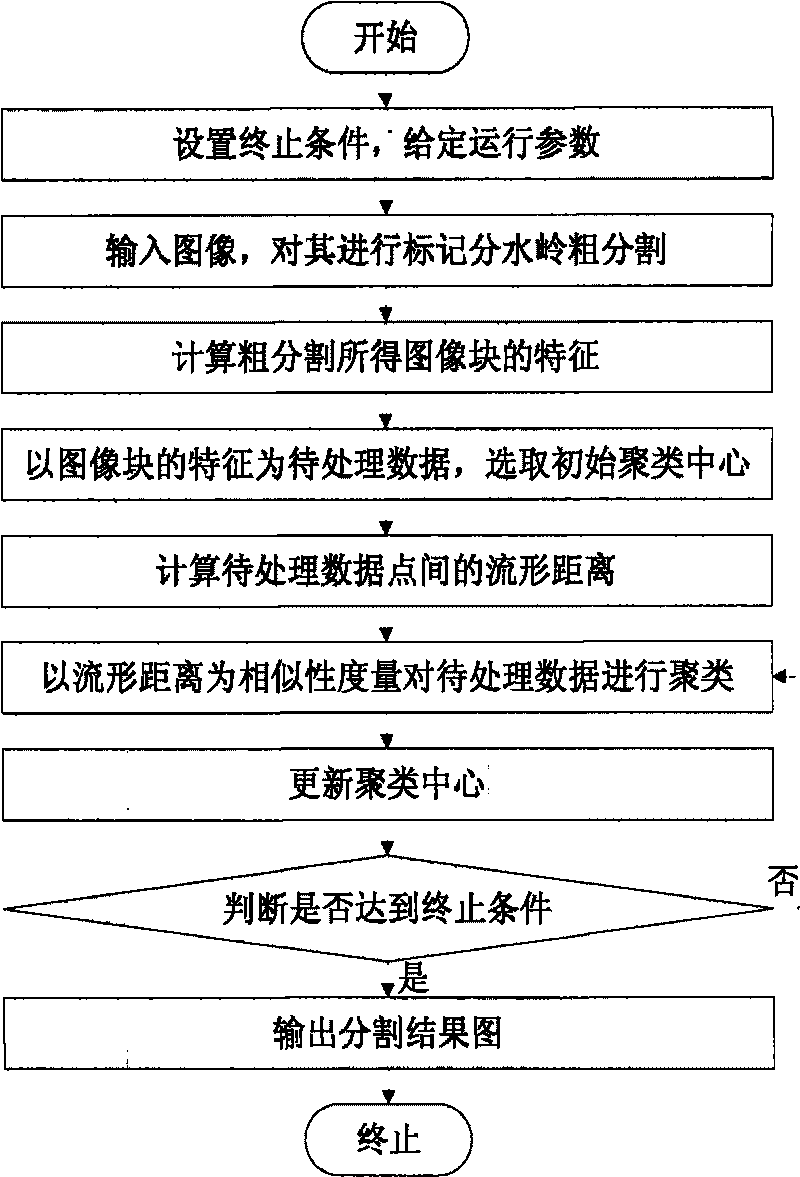Image segmentation method based on overall manifold prototype clustering algorithm and watershed algorithm
A technology of watershed algorithm and clustering algorithm, which is applied in the fields of image processing, pattern recognition, image enhancement, and target tracking. It can solve the problems of high computational complexity of manifold distances, overcome initialization sensitive problems, accurate distribution characteristics, and reduce the amount of calculations. Effect
- Summary
- Abstract
- Description
- Claims
- Application Information
AI Technical Summary
Problems solved by technology
Method used
Image
Examples
Embodiment Construction
[0029] refer to figure 1 , the specific implementation steps of the present invention are as follows:
[0030] Step 1. Given the operating parameters, set the termination condition of the algorithm.
[0031] The operating parameters include: cluster number K, cluster termination condition e, watershed marker threshold T, and manifold distance scaling factor ρ. in:
[0032] The number of clustering classes K needs to be determined according to the specific image to be processed, referring to the characteristics of the image to be segmented, and how many classes are expected to be divided into, and K is set to that number.
[0033] The clustering termination condition e adopts the method of terminating when the clustering error has not improved significantly in two consecutive iterations, and e is set to 10 -10 .
[0034] The watershed marker threshold T determines the number of coarsely segmented image blocks after watershed transformation. If it is too small, it will cause...
PUM
 Login to View More
Login to View More Abstract
Description
Claims
Application Information
 Login to View More
Login to View More - R&D
- Intellectual Property
- Life Sciences
- Materials
- Tech Scout
- Unparalleled Data Quality
- Higher Quality Content
- 60% Fewer Hallucinations
Browse by: Latest US Patents, China's latest patents, Technical Efficacy Thesaurus, Application Domain, Technology Topic, Popular Technical Reports.
© 2025 PatSnap. All rights reserved.Legal|Privacy policy|Modern Slavery Act Transparency Statement|Sitemap|About US| Contact US: help@patsnap.com



